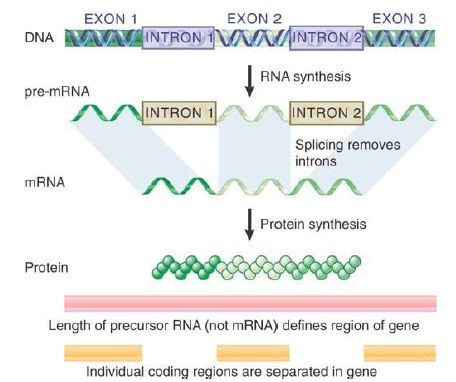

النبات

مواضيع عامة في علم النبات

الجذور - السيقان - الأوراق

النباتات الوعائية واللاوعائية

البذور (مغطاة البذور - عاريات البذور)

الطحالب

النباتات الطبية


الحيوان

مواضيع عامة في علم الحيوان

علم التشريح

التنوع الإحيائي

البايلوجيا الخلوية


الأحياء المجهرية

البكتيريا

الفطريات

الطفيليات

الفايروسات


علم الأمراض

الاورام

الامراض الوراثية

الامراض المناعية

الامراض المدارية

اضطرابات الدورة الدموية

مواضيع عامة في علم الامراض

الحشرات


التقانة الإحيائية

مواضيع عامة في التقانة الإحيائية


التقنية الحيوية المكروبية

التقنية الحيوية والميكروبات

الفعاليات الحيوية

وراثة الاحياء المجهرية

تصنيف الاحياء المجهرية

الاحياء المجهرية في الطبيعة

أيض الاجهاد

التقنية الحيوية والبيئة

التقنية الحيوية والطب

التقنية الحيوية والزراعة

التقنية الحيوية والصناعة

التقنية الحيوية والطاقة

البحار والطحالب الصغيرة

عزل البروتين

هندسة الجينات


التقنية الحياتية النانوية

مفاهيم التقنية الحيوية النانوية

التراكيب النانوية والمجاهر المستخدمة في رؤيتها

تصنيع وتخليق المواد النانوية

تطبيقات التقنية النانوية والحيوية النانوية

الرقائق والمتحسسات الحيوية

المصفوفات المجهرية وحاسوب الدنا

اللقاحات

البيئة والتلوث


علم الأجنة

اعضاء التكاثر وتشكل الاعراس

الاخصاب

التشطر

العصيبة وتشكل الجسيدات

تشكل اللواحق الجنينية

تكون المعيدة وظهور الطبقات الجنينية

مقدمة لعلم الاجنة


الأحياء الجزيئي

مواضيع عامة في الاحياء الجزيئي


علم وظائف الأعضاء


الغدد

مواضيع عامة في الغدد

الغدد الصم و هرموناتها

الجسم تحت السريري

الغدة النخامية

الغدة الكظرية

الغدة التناسلية

الغدة الدرقية والجار الدرقية

الغدة البنكرياسية

الغدة الصنوبرية

مواضيع عامة في علم وظائف الاعضاء

الخلية الحيوانية

الجهاز العصبي

أعضاء الحس

الجهاز العضلي

السوائل الجسمية

الجهاز الدوري والليمف

الجهاز التنفسي

الجهاز الهضمي

الجهاز البولي


المضادات الميكروبية

مواضيع عامة في المضادات الميكروبية

مضادات البكتيريا

مضادات الفطريات

مضادات الطفيليات

مضادات الفايروسات

علم الخلية

الوراثة

الأحياء العامة

المناعة

التحليلات المرضية

الكيمياء الحيوية

مواضيع متنوعة أخرى

الانزيمات
Introduction to the interrupted Gene
المؤلف:
JOCELYN E. KREBS, ELLIOTT S. GOLDSTEIN and STEPHEN T. KILPATRICK
المصدر:
LEWIN’S GENES XII
الجزء والصفحة:
8-3-2021
2378
Introduction to the interrupted Gene
The simplest form of a gene is a length of DNA that directly corresponds to its polypeptide product. Bacterial genes are almost always of this type, in which a continuous sequence of 3N bases encodes a polypeptide of N amino acids. However, in eukaryotes, ribosomal RNAs (rRNAs), transfer RNAs (tRNAs), and most messenger RNAs (mRNAs) are first synthesized as long precursor transcripts that are subsequently shortened . Thus, eukaryotic genes are usually much longer than the functional transcripts they produce. It is reasonable to assume that the shortening involved a trimming of additional, perhaps regulatory, sequences at the 5′ and/or 3′ end of transcripts, leaving the rRNA or protein-encoding sequence of the precursor intact.
However, a eukaryotic gene can include additional sequences that lie both within and outside the region that is operational with respect to phenotype. Protein-encoding sequences can be interrupted, as can the 5′ and 3′ sequences (UTRs) that flank the protein-encoding sequences within mRNA. The interrupting sequences are removed from the primary (RNA) transcript (or
pre-mRNA) during gene expression, generating an mRNA that includes a continuous base sequence corresponding to the polypeptide product as determined by the genetic code. The sequences of DNA comprising an interrupted protein-encoding gene are divided into the two categories (see FIGURE.1):

FIGURE .1 Interrupted genes are expressed via a precursor RNA. Introns are removed when the exons are spliced together. The mature mRNA has only the sequences of the exons.
-Exons are the sequences retained in the mature RNA product. A mature transcript begins and ends with exons that correspond to the 5′ and 3′ ends of the RNA.
-Introns are the intervening sequences that are removed when the primary RNA transcript is processed to give the mature RNA product.
The exon sequences are in the same order in the gene and in the RNA, but an interrupted gene is longer than its mature RNA product because of the presence of the introns.The processing of interrupted genes requires an additional step that is not necessary in uninterrupted genes. The DNA of an interrupted gene is transcribed to an RNA copy (a transcript) that is exactly complementary to the original DNA sequence. This RNA is only a precursor, though; it cannot yet be used to produce a polypeptide. First, the introns must be removed from the RNA to give an mRNA that consists only of a series of exons. This process is called RNA splicing (see the chapter titled Genes Are DNA and Encode RNAs and Polypeptides) and involves precisely deleting the introns from the primary transcript and then joining the ends of the RNA on either side of each intron to form a covalently intact molecule (see the chapter titled RNA Splicing and Processing).
The original eukaryotic gene comprises the region in the genome between points corresponding to the 5′ and 3′ terminal bases of mature RNA. We know that transcription begins at the DNA template corresponding to the 5′ end of the mRNA and usually extends beyond the complement to the 3′ end of the mature RNA, which is generated by cleavage of the 3′ extension. The gene is also considered to include the regulatory regions on both sides of
the gene that are required for the initiation and (sometimes) termination of transcription.
 الاكثر قراءة في مواضيع عامة في الاحياء الجزيئي
الاكثر قراءة في مواضيع عامة في الاحياء الجزيئي
 اخر الاخبار
اخر الاخبار
اخبار العتبة العباسية المقدسة

الآخبار الصحية















 قسم الشؤون الفكرية يصدر كتاباً يوثق تاريخ السدانة في العتبة العباسية المقدسة
قسم الشؤون الفكرية يصدر كتاباً يوثق تاريخ السدانة في العتبة العباسية المقدسة "المهمة".. إصدار قصصي يوثّق القصص الفائزة في مسابقة فتوى الدفاع المقدسة للقصة القصيرة
"المهمة".. إصدار قصصي يوثّق القصص الفائزة في مسابقة فتوى الدفاع المقدسة للقصة القصيرة (نوافذ).. إصدار أدبي يوثق القصص الفائزة في مسابقة الإمام العسكري (عليه السلام)
(نوافذ).. إصدار أدبي يوثق القصص الفائزة في مسابقة الإمام العسكري (عليه السلام)


















